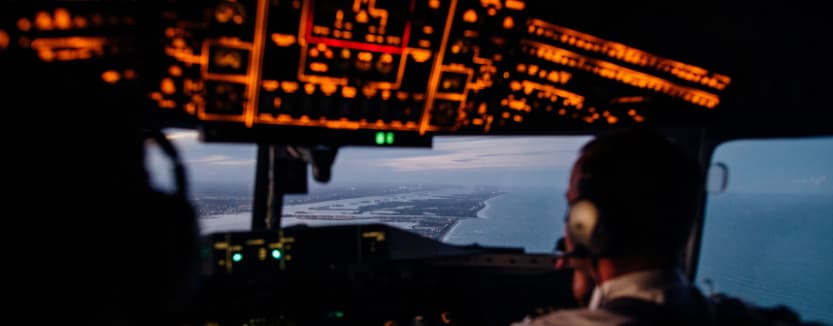The black box, or rather “the black boxes”, since there are two of them, are an indispensable element in aviation. Unfortunately, after an air disaster, we always hear in the media that people are looking for the black box to find out what happened on the flight, and the importance of these devices in clarifying what happened is fundamental.
Black boxes – which by the way are not black, but orange to make them more visible in the wreckage of an accident – are an essential element in the collection of in-flight data. To fulfil their function, in addition to being able to store information, they must also be robustly constructed so that they are not destroyed in the event of an accident, and so that after they have been located and recovered they are still able to provide the valuable data stored inside them.
It is estimated that, thanks to the black boxes, up to 90% of the failures that cause air crashes can be identified.
What is it for?
The black box is a device that records and stores engine parameters, instrument parameters, flight status (altitude, speed, etc.), and communications between the two pilots or with ground control or other aircraft. Its function is to record as much data as possible during the flight.
It is a fundamental element in the event of an accident, since the information it stores is key to clarifying the cause or causes of an accident from its analysis.
Origin of the black box
The invention of the black box is attributed to David Warren. In 1953, he was asked to discover the reasons why airplane crashes occur. The engineer thought that the task would be easier if he was able to retrieve information about what happened on board in the last seconds before a crash.
With this in mind, in 1954 he proposed that a recorder be installed in the cockpit. In 1958 Warren produced the first prototype of a black box, which he called a flight memory. His device was initially rejected by several airlines, and many pilots felt that the device was spying on their work.
Later Warren went to the UK and after a report on the BBC, several airlines showed interest. By 1960 the black box was already implemented in several airlines as a mandatory device.
Types of black box
Currently, aircraft are fitted with two types of black box:
- Flight Data Recorder (FDR): Its function is to store all those technical parameters that occur during flight: altitude, speed, heading, airspeed, engine performance, etc.
- Cockpit Voice Recorder (CVR): This device collects all the sound produced in the cockpit, including the pilots’ conversations with each other or with ground control or other aircraft. It is very useful, as it allows us to know if alarms were triggered, if there were warnings to the control tower, … There are some black boxes that also incorporate video, which makes their material even more valuable.
In addition, the black boxes have an underwater beacon that allows them to be located at a depth of more than 5,000 metres, powered by batteries that allow the signal to be emitted for several weeks after the accident.
The future of black boxes
The black box is a great invention that has shed light on countless accidents, making it possible to implement procedures aimed at improving the safety of air operations, but it still has room for improvement. One of its main disadvantages is its post-accident localization. In order to improve the speed of localization after an accident, GPS devices are beginning to be installed in the crates. Another possible solution would be the creation of floating black boxes or even self-expelling black boxes. The latter has been used in military aviation since 2015.
The other option being considered is to transmit data via satellite. In this way, even if the box is lost or destroyed, the information would be safe in the cloud. Honeywell and Curtiss-Wright are working on such a prototype.
